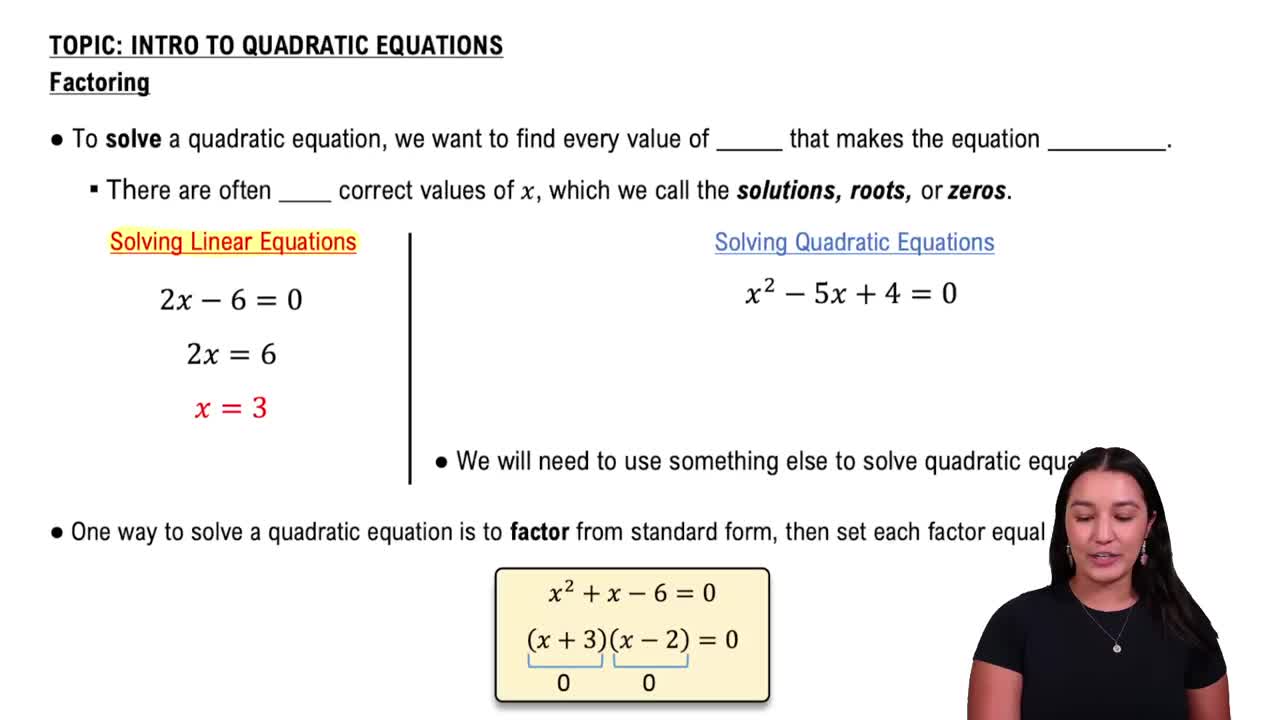Here are the essential concepts you must grasp in order to answer the question correctly.
Quadratic Inequalities
Quadratic inequalities are expressions that involve a quadratic polynomial set in relation to a value, typically using symbols like ≤, ≥, <, or >. To solve these inequalities, one must first rearrange the expression to one side, resulting in a standard form that can be analyzed for its roots and intervals. The solution involves determining where the quadratic expression is less than or equal to the specified value.
Recommended video:
Interval Notation
Interval notation is a mathematical notation used to represent a range of values. It uses parentheses and brackets to indicate whether endpoints are included (closed intervals) or excluded (open intervals). For example, the interval [a, b] includes both a and b, while (a, b) does not. This notation is essential for clearly expressing the solution set of inequalities.
Recommended video:
Factoring Quadratics
Factoring quadratics involves rewriting a quadratic expression as a product of its linear factors. This process is crucial for solving quadratic equations and inequalities, as it allows for the identification of the roots or critical points where the expression changes sign. In the context of the given inequality, factoring helps to simplify the problem and determine the intervals where the inequality holds true.
Recommended video:
Solving Quadratic Equations by Factoring
 Verified step by step guidance
Verified step by step guidance Verified video answer for a similar problem:
Verified video answer for a similar problem:

